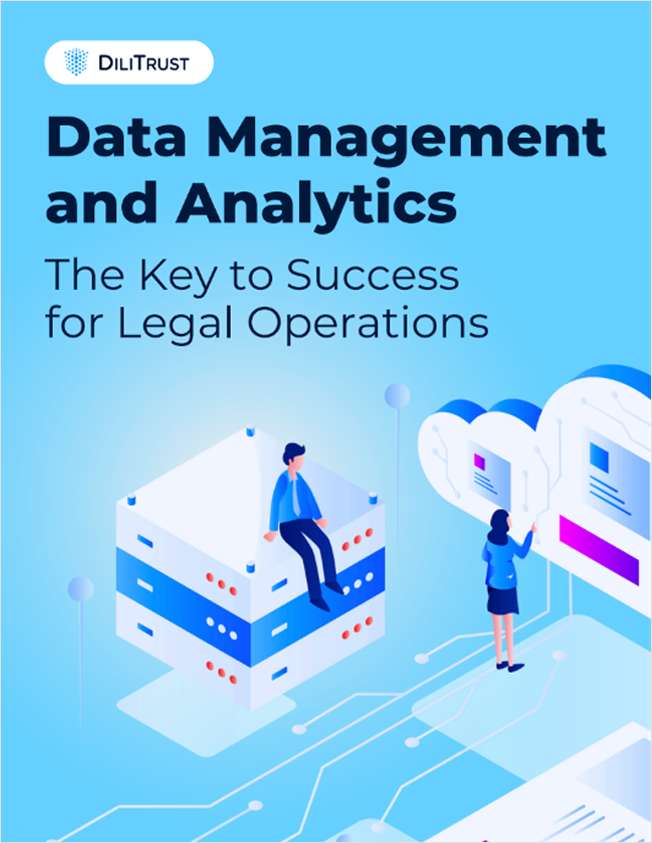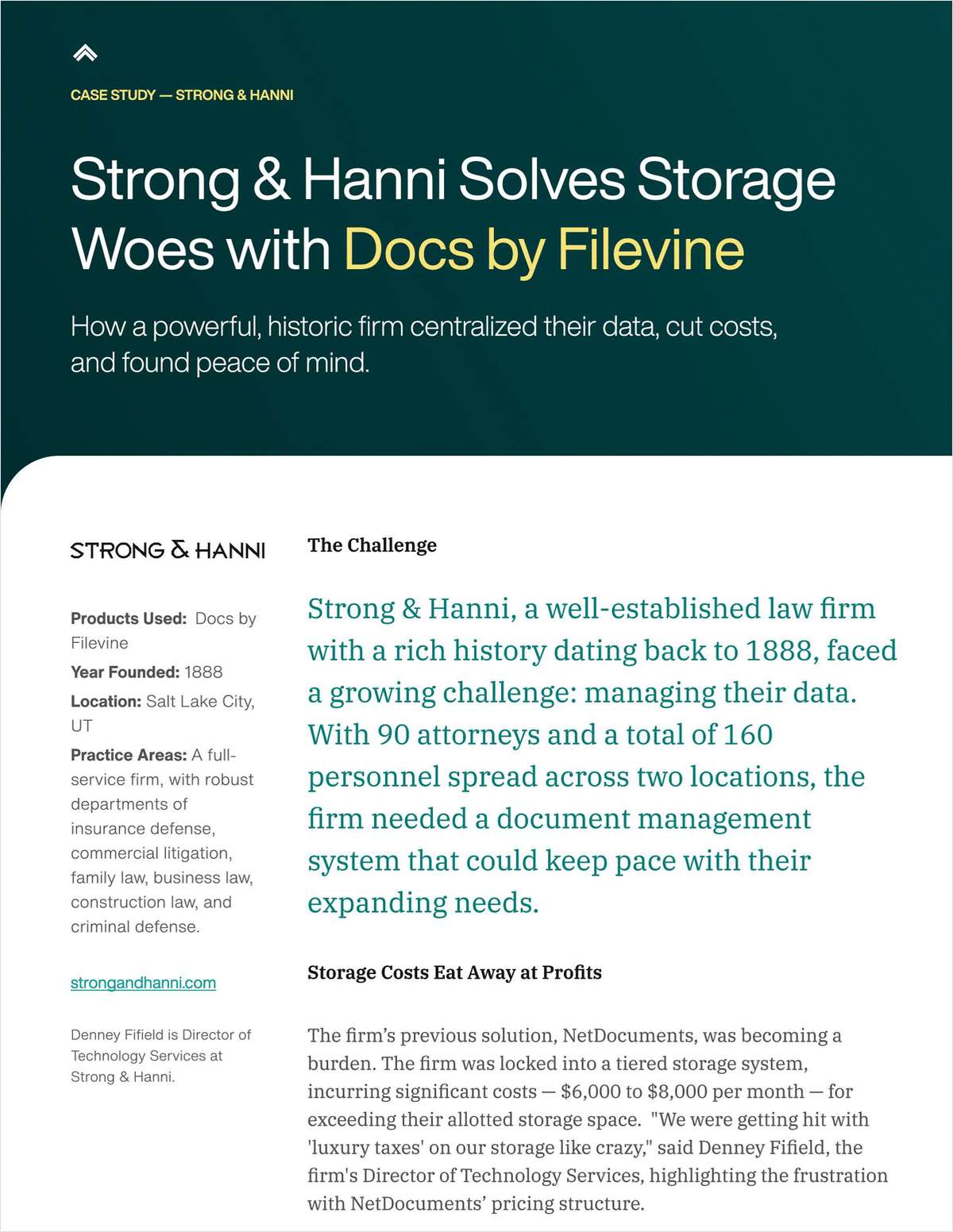 Microsoft offices in Silicon Valley. Photo: Shutterstock
Microsoft offices in Silicon Valley. Photo: ShutterstockMicrosoft Unveils New Information Governance Tools as Regulatory Demands Grow
Microsoft offered Legaltech News a sneak preview of its new tools that help to automate classification of files and track risky communications and digital behavior on its platforms.
November 07, 2019 at 09:30 AM
4 minute read
The original version of this story was published on Legal Tech News
Lawyers are sounding the alarm about the increasing data responsibilities the General Data Protection Regulation (GDPR) and California Consumer Privacy Act (CCPA) are placing on organizations. In light of the heavier burden, Microsoft announced it's set to release new compliance and information governance tools to provide real-time filing and notifications regarding sensitive data at the end of the year.
To be sure, Microsoft isn't the only tech company providing information governance and compliance tools. Take for example FileTrail Inc.'s Governance Policy Suite and Epiq, which, like Microsoft, integrates its information governance solutions into Office 365.
Still, Microsoft 365 senior director Alym Rayani touted Microsoft's tech acumen when developing the tools and the ease of setting up integrated safeguards as key differentiators from other information governance offerings.
Plus, Microsoft is a popular platform among lawyers. Indeed, while Office 365′s lawyer usage lags behind Google Docs, Microsoft Word is used by 98% of lawyers, according to the American Bar Association's 2019 Legal Technology Survey Report. Likewise, 97% of respondents said they also use Microsoft Excel.
Popularity aside, Rayani noted more organizations, including law firms, are attempting to mitigate risk in their organization. "Customers quite frankly say they are struggling with these and they don't have the in-house expertise to keep up with the regulations," he said.
Below are highlights from Microsoft's new releases.
|Expanding Labeling, Protection
User-driven sensitivity labeling is now available in Outlook Mobile. Microsoft is also set to add automatic classification into its Office 365 ProPlus versions of Word, Excel, PowerPoint and Outlook. Users can now train Microsoft's classification engine to label data sets unique to the organization, such as customer records and contracts, Rayani explained.
The new trainable classifier can also work in tandem with retention labels to automatically label data as sensitive and apply appropriate policies.
What's more, Microsoft also included the ability to apply protections to PDFs in an email, which include encrypting and watermarking the document.
|Insider Risk Management
Insider Risk Management works to identify a set of risks, such as digital IP theft, HR compliance and confidentiality breaches in Microsoft Office, Windows and Azure. It does so by leveraging machine learning to flag "communications' sentiment" and abnormal user behaviors in real-time. "It essentially uses AI to identify risks traditional methods may miss," Rayani said.
For example, Insider Risk Management notes when a user downloads files and copies them to a USB device and later sends a letter of resignation. Insider Risk Management can notify HR, corporate counsel or whomever about the actions because "it starts to paint a picture of what is happening with that employee or incident," he said.
Investigators would see a set of files that individual downloaded "frozen in time" for an investigator to assess any potential wrongdoing.
|Communication Compliance
As employees leverage more collaboration apps to communicate, their regulatory and corporate compliance requirements continue. In turn, Microsoft developed Communication Compliance to detect corporate and regulatory violations across various collaboration platforms, including Microsoft Teams, Exchange Online and Bloomberg instant messages.
Once the machine learning-assisted tool flags a violation, a designated investigator is alerted. Features such as historical user context on past violations, conversation threading and keyword highlighting allows the investigator to balance the full context of a matter quickly, according to Microsoft.
This content has been archived. It is available through our partners, LexisNexis® and Bloomberg Law.
To view this content, please continue to their sites.
Not a Lexis Subscriber?
Subscribe Now
Not a Bloomberg Law Subscriber?
Subscribe Now
NOT FOR REPRINT
© 2024 ALM Global, LLC, All Rights Reserved. Request academic re-use from www.copyright.com. All other uses, submit a request to [email protected]. For more information visit Asset & Logo Licensing.
You Might Like
View All
How Dana Rao Built a 'Yes' Culture at Adobe and Why He Walked Away

Keker Secures Defense Win for EDA Software Company Real Intent in Synopsys Copyright Infringement Case

Old Laws, New Tricks: Lawyers Using Patchwork of Creative Legal Theories to Target New Tech

Microsoft's Banner Year Pushed Brad Smith's Pay Sharply Higher
Trending Stories
- 1Infant Formula Judge Sanctions Kirkland's Jim Hurst: 'Overtly Crossed the Lines'
- 2Trump's Return to the White House: The Legal Industry Reacts
- 3Election 2024: Nationwide Judicial Races and Ballot Measures to Watch
- 4Climate Disputes, International Arbitration, and State Court Limitations for Global Issues
- 5Judicial Face-Off: Navigating the Ethical and Efficient Use of AI in Legal Practice [CLE Pending]
- 6How Much Does the Frequency of Retirement Withdrawals Matter?
Who Got The Work
Michael G. Bongiorno, Andrew Scott Dulberg and Elizabeth E. Driscoll from Wilmer Cutler Pickering Hale and Dorr have stepped in to represent Symbotic Inc., an A.I.-enabled technology platform that focuses on increasing supply chain efficiency, and other defendants in a pending shareholder derivative lawsuit. The case, filed Oct. 2 in Massachusetts District Court by the Brown Law Firm on behalf of Stephen Austen, accuses certain officers and directors of misleading investors in regard to Symbotic's potential for margin growth by failing to disclose that the company was not equipped to timely deploy its systems or manage expenses through project delays. The case, assigned to U.S. District Judge Nathaniel M. Gorton, is 1:24-cv-12522, Austen v. Cohen et al.
Who Got The Work
Edmund Polubinski and Marie Killmond of Davis Polk & Wardwell have entered appearances for data platform software development company MongoDB and other defendants in a pending shareholder derivative lawsuit. The action, filed Oct. 7 in New York Southern District Court by the Brown Law Firm, accuses the company's directors and/or officers of falsely expressing confidence in the company’s restructuring of its sales incentive plan and downplaying the severity of decreases in its upfront commitments. The case is 1:24-cv-07594, Roy v. Ittycheria et al.
Who Got The Work
Amy O. Bruchs and Kurt F. Ellison of Michael Best & Friedrich have entered appearances for Epic Systems Corp. in a pending employment discrimination lawsuit. The suit was filed Sept. 7 in Wisconsin Western District Court by Levine Eisberner LLC and Siri & Glimstad on behalf of a project manager who claims that he was wrongfully terminated after applying for a religious exemption to the defendant's COVID-19 vaccine mandate. The case, assigned to U.S. Magistrate Judge Anita Marie Boor, is 3:24-cv-00630, Secker, Nathan v. Epic Systems Corporation.
Who Got The Work
David X. Sullivan, Thomas J. Finn and Gregory A. Hall from McCarter & English have entered appearances for Sunrun Installation Services in a pending civil rights lawsuit. The complaint was filed Sept. 4 in Connecticut District Court by attorney Robert M. Berke on behalf of former employee George Edward Steins, who was arrested and charged with employing an unregistered home improvement salesperson. The complaint alleges that had Sunrun informed the Connecticut Department of Consumer Protection that the plaintiff's employment had ended in 2017 and that he no longer held Sunrun's home improvement contractor license, he would not have been hit with charges, which were dismissed in May 2024. The case, assigned to U.S. District Judge Jeffrey A. Meyer, is 3:24-cv-01423, Steins v. Sunrun, Inc. et al.
Who Got The Work
Greenberg Traurig shareholder Joshua L. Raskin has entered an appearance for boohoo.com UK Ltd. in a pending patent infringement lawsuit. The suit, filed Sept. 3 in Texas Eastern District Court by Rozier Hardt McDonough on behalf of Alto Dynamics, asserts five patents related to an online shopping platform. The case, assigned to U.S. District Judge Rodney Gilstrap, is 2:24-cv-00719, Alto Dynamics, LLC v. boohoo.com UK Limited.
Featured Firms
Law Offices of Gary Martin Hays & Associates, P.C.
(470) 294-1674
Law Offices of Mark E. Salomone
(857) 444-6468
Smith & Hassler
(713) 739-1250








